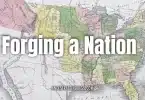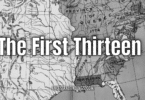Columbus is the capital of the state of Ohio, and also the most populous city in that state. It has a population of about 900,000 people. It is the fourteenth most populous city in the United States and the second-most populous city in the midwestern United States after Chicago in the state of Illinois. It is the city that is at the center of the Columbus Metropolitan Statistical Area. This area includes ten counties and has a population of just over two million people, making it the second-most populous area of this kind in Ohio.
Columbus is also the county seat of Franklin County. The city has annexed parts of neighboring Delaware and Fairfield Counties, as well, and is named for the famous medieval explorer, Christopher Columbus. It was founded as a city in 1812 and became the state capital in 1816.
There are a lot of different economic sectors in Columbus that contribute to most of the state’s economy. These sectors are aviation, government, education, insurance, defense, banking, clothing, food, steel, logistics, energy, medical research, health care, retail, hospitality, and technology. It is the international headquarters of such well-known companies as American Electric Power, Nationwide Insurance, Cardinal Health, Big Lots, and L Brands.
Since June of 2020, there have been several calls and petitions to rename Columbus. These are in relation to the racial protests in the United States, though calls to remove statues and other symbols relating to Christopher Columbus in the city go back to the 1990s. It is not clear why Columbus is named after this controversial historical figure. There is no evidence that he ever went there. With no known connection to the Columbus area or even Ohio, the origins of the city’s name are unknown. In fact, Columbus is one of fifty-four communities around the United States that are named for Christopher Columbus. The only clue as to why this city has the name it does is found in a book called Columbus: The Story of a City. This book indicates that Columbus was named for the explorer at the time the city was founded and that a state lawmaker in Ohio had a personal admiration for the man, which was great enough to allow him to persuade other lawmakers to approve of giving the name to the city.
To those who prefer to not refer to Columbus by its given name, it has a number of popular nicknames that celebrate various aspects of the city. These nicknames include “the Discovery City,” “Indie Art Capital,” “The Biggest Small Town in America,” “Cowtown,” and Cbus.”
Long before Europeans first came to the area that is now Columbus, it was inhabited by Native Americans. The earliest known culture to live there was called the Mound Builders. They lived there between 1000 A.D. and 1700 A.D. Earlier civilizations probably lived there, but their names are not known. The Mound Builder culture included such tribes as the Fort Ancient, Hopewell, and Adena. They did not leave much evidence of their existence, except the large burial mounds (and their contents) that dot the landscape. Many mounds were destroyed with European development of the area, but some still do exist outside of the city limits of Columbus. One mound, the Shrum Mound, is in the Columbus city limits and is now a public park and historic site. This mound’s name is derived from another mound that once existed between what is now the intersection of Mound and High Streets. The clay from that previous mound was taken and used to make bricks for most of the city’s earliest brick buildings, and also on the Ohio Statehouse. The Ohio History Center in Columbus includes a collection of artifacts found in that mound, as well as other artifacts from the Mound Builder culture.
The area that is now Columbus was initially under the control of France when European settlers arrived for the first time. It was technically part of the French colonial empire from 1663 to 1763. European traders, particularly French ones, flocked to the area during that time to participate in the lucrative fur trade. It was also an area that was frequently in dispute or caught between the disputes of others. Native tribes and European settlers often conflicted with each other there. Pennsylvania traders briefly took over the territory in the 1740s until the French evicted them.
The Ohio Company sent George Washington to the Ohio Territory in the 1750s to survey it. The French did not take kindly to this, and the French and Indian War was partial as a result of that incident, as the French and English fought with their respective Native allies for control of the area. The English won, after a seven-year war, and Ohio was ceded to them with the 1763 Treaty of Paris.
After the American Revolution, the Ohio Territory became part of Virginia, and colonists moved there from the new United States. These new settlers encountered a number of tribes already living in Ohio, such as the Mingo, Shawnee, Wyandot, Miami, and Delaware people. There were fur traders from France and other parts of Europe still living there, too. The Native tribes did not want Europeans to encroach any more onto their land, which led to years of struggles between them and the settlers. The Battle of Fallen Timbers resulted in a treaty that gave settlers from the United States the land, and the Natives had to move.
Wanting to reward Canadian supporters of the American Revolution, the United States Congress set aside land in Ohio to compensate these sympathizers, many of whom had their land and belongings seized by the British. This so-called Refugee Tract of land included 103,000 acres across forty-two miles in length and 4.5 miles in width and included the area that is now Columbus. Sixty-seven men who were eligible claimed tracts of land in the Refugee Tract, and the statehouse now sits on land that was once part of it.







